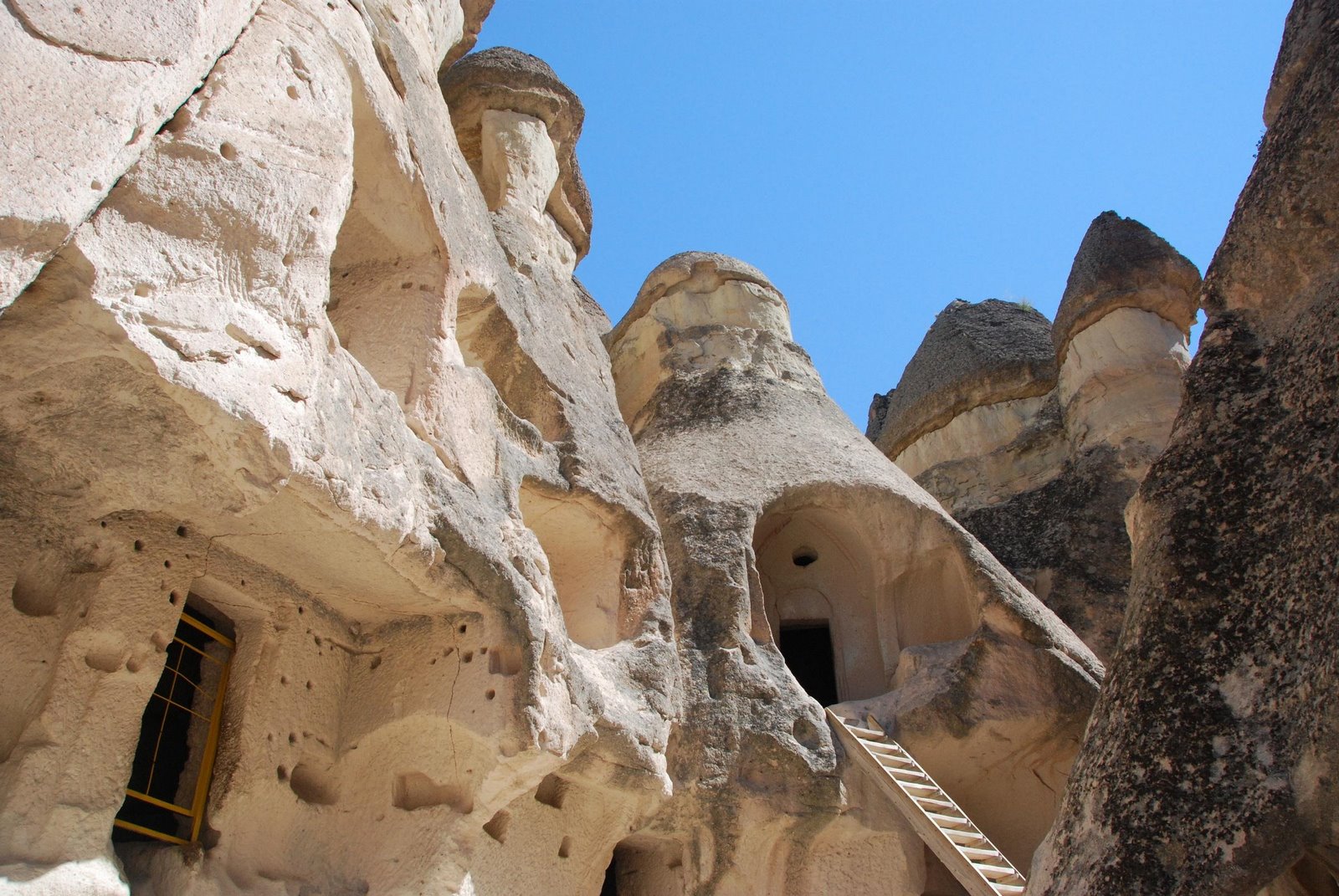Fairy 
 Chimney
Chimney is a conical rock formation, typically found in the Cappadocia region of Turkey. It co
is a conical rock formation, typically found in the Cappadocia region of Turkey. It co ns
ns i
i sts of a cap of hard rock resting on a cone-shaped pinnacle of softer rock. In Cappadocia, houses have been carved from these formations, and they make it a popular tourist destination.
sts of a cap of hard rock resting on a cone-shaped pinnacle of softer rock. In Cappadocia, houses have been carved from these formations, and they make it a popular tourist destination.
Zelve Monastery was carved into the rock in pre-Iconoclastic times.
The remains of the Zelve monastery complex is located on the northern slopes of Aktepe, 1km from Paşa Bağlari and 10 km out from Göreme on the Avanos road. Zelve does not have the rich frescoes of Göreme and other Cappodocian locations. Spread out over three valleys, of which two are connected by a tunnel, the monastery is still rich in its own beauty. The valleys can provide you with plenty of hiking and exploring. The complex contains innumerable rooms and passages which also house many pointed fairy chimneys with large stems, at about 40 feet above the valley floor.
Zelve, though recently uninhabited, was an important settlement and religious area during the 9th and 13th centuries. The Christians moved to Zelve during the Persian and Arab invasions.
Cappodocia's first seminaries to train priests are located here at the monastery. Dating back to the early years of monastery life in Zelve is the Direkli Church (with the Columns). Direkli is located at the bottom of the slope. The main decorations are Iconoclastic-doctrine high relief crosses. The valley also contains the Balikli Kilise (Fish), Üzümlü Kilise (Grapes), and Geyikli Kilise (Deer) churches. These churches date to the Pre-Iconoclastic period.
The area is a famous and popular tourist destination, as it has many areas with unique geological, historic and cultural features.
The region is southwest of the major city Kayseri, which has airline and railroad service to Ankara and Istanbul.
The Cappadocia region is largely underlain by sedimentary rocks formed in lakes and streams, and ignimbrite deposits erupted from ancient volcanoes approximately 9 to 3 million years ago (late Miocene to Pliocene epochs). The rocks of Cappadocia near Göreme eroded into hundreds of spectacular pillars and minaret-like forms. The volcanic deposits are soft rocks that the people of the villages at the heart of the Cappadocia Region carved out to form houses, churches, monasteries. Göreme became a monastic center between 300-1200 AD. First period settlement in Göreme reaches to the Roman period from Christianity. Yusuf Koç, Ortahane, Durmus Kadir and Bezirhane churches in Göreme, houses and churches carved into rocks till to Uzundere, Bağıldere and Zemi Valley carries the mystical side of history today. The Göreme Open Air Museum is the most visited site of the monastic communities in Cappadocia and is one of the most famous sites in central Turkey. It is a complex comprising more than 30 rock-carved churches and chapels containing some superb frescoes, dating from the 9th to the 11th centuries...(more on www.wikipedia.org)





No comments:
Post a Comment